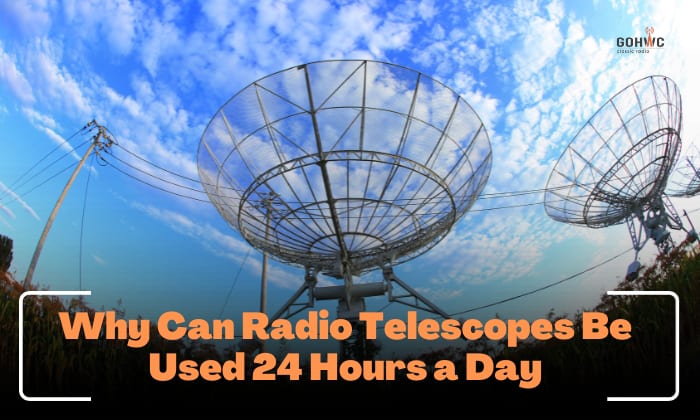Radio telescopes are instruments that allow nocturnal observations of the stars, galaxies, or even black holes year-round. So why can radio telescopes be used 24 hours a day?
These telescopes work at radio frequencies and are not affected by light or darkness. Additionally, the sun’s emission in radio wavelength is relatively weak, which means it will not interfere with other radio signals received by telescopes. Keep reading to learn more about radio astronomy.
Why Can Radio Telescopes Be Used Day and Night?
Radio telescopes can be used 24 hours a day uninterrupted, since they do not require visible light to work and can operate day and night.
Because radio waves are not blocked by clouds, radio telescopes can use these waves to investigate heavenly bodies like stars and planets even in gloomy weather.
The sun doesn’t interfere with radio signals received by the telescopes, either, since radio signals from the sun are not strong enough to drown them out.
If there’s one disadvantage of these devices, however, it’s their low angular resolution. To improve their image quality, radio telescopes are made larger. Additionally, astronomers use an array of them to enhance the quality of the data obtained.
Conclusion
Radio telescopes are immune to light pollution and can function continuously, even in adverse weather conditions. These include snow, thunderstorms, sun, or even clouds.
This way, astronomers can locate and map stars and even see through clouds to gain insights into celestial phenomena. Now, knowing the answer to “why can radio telescopes be used 24 hours a day?” you can explore the intricacies of astronomy.

Hi there! I am Howe, and I am the founder of G0HWC. I have been a radio enthusiast for as long as I can remember. I live and breathe radio, always taking the chance to blabber about it when customers seek my radio mechanic services.
Five years into working as a radio mechanic, I realized that most people struggle to fully understand the different complex aspects of owning and using a radio, though they understand the importance of having one.
And it dawned on me: I can put my blabbering to good use!
I started G0HWC to blabber all I want and help others who are not yet well-versed in radio language in doing so.

